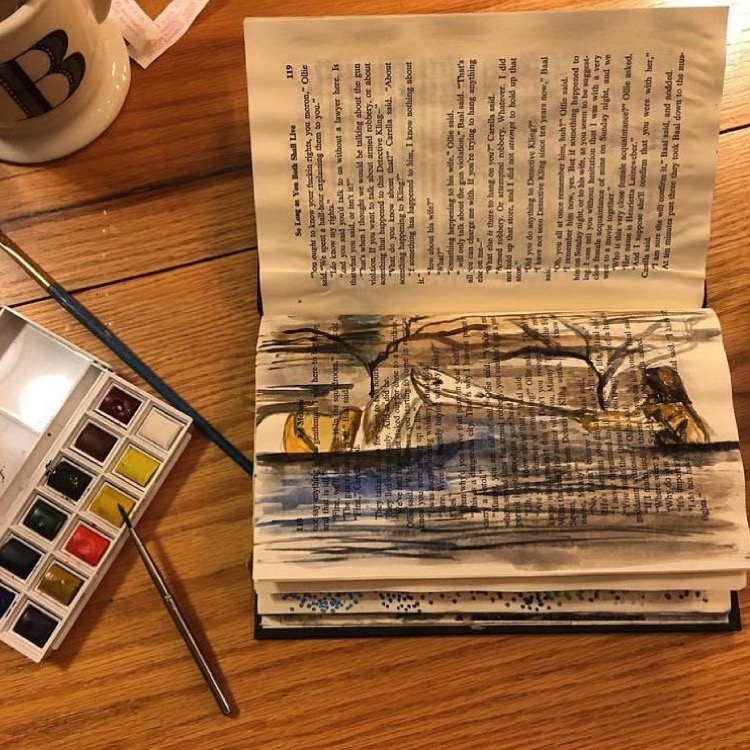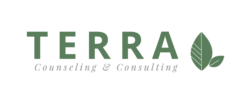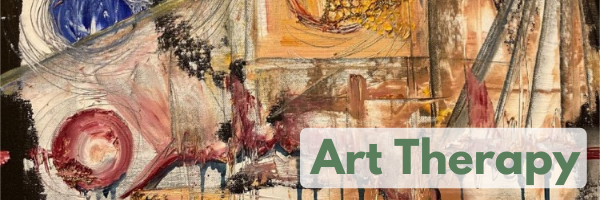Art can take what is invisible and make it visible. Art therapy is a mental health profession that allows for the verbal and nonverbal expression of thoughts and emotions. When patients transform their thoughts and feelings into tangible images, they can explore them from a different perspective in a non-threatening manner. As stated by American Art Therapy Association, an art therapist uses the healing aspects of art to promote physical, mental, and emotional well-being.
Benefits of Art Therapy
Art therapists meet you and your level of artistry right where you are. Artistic skill or experience is not required to benefit from this work; the process bypasses perceived limitations and goes to personal strengths.
Art therapy is…
- Rooted in creativity and adaptive to each individual’s needs and wants in the therapeutic relationship;
- Appropriate for people of all ages, needs, backgrounds, and goals;
- Helpful to people who want to find and communicate meaning;
- An expressive therapy that promotes mental, emotional, and physical healing.

Art Therapy and Trauma Recovery
Responses to traumatic stress are individual, highly subjective, and dependent on a person’s resources, supports, and strengths. Trauma is experienced in three ways: Physically (the body), cognitively (memory and thought), and emotionally (the subjective experience). The making and processing of art allow access to all three of these characteristics of trauma.
- Art therapy facilitates the organization and integration of traumatic memories as it helps you understand and process your experiences differently.
- The creative process reactivates positive emotions and serves as a vehicle for communicating difficult topics.
- The process of artmaking reduces the heightened arousal responses of trauma triggers such as the fight, flight, freeze responses.
- It enhances emotional self-efficacy and maintains a space for the exploration of self-perception. Artmaking lends autonomy over the therapeutic process because the work is literally in the client’s hands. The image can communicate unconscious thought processes and form a bridge between thought and communication.
- It enhances the development and reintegration of identity as the traumatic responses are unpacked through art therapy, made sense of together with the therapist, and put back together to form a piece of artistic, traumatic, and healing expression.

Art Therapy and Neuroscience
From a neuroscientific perspective, early experiences shape the brain and set attachments for life, but significant experiences of positive relatedness to others later in life can reform attachments and change the brain. Reciprocal verbal and nonverbal communication facilitates trust and shared meanings to alter and repair attachment. Neurogenesis, the brain’s capacity for growth, and neuroplasticity, the brain’s capacity for change, are most efficient when there are different types of sensory input. This is where the multi-sensory aspect of artmaking comes in. Interventions that utilize the body can help to solidify a connection between sensorimotor experiences, perceptions, feelings, thoughts, and inferred meaning. Reintegrating the brain in this manner allows for a literal rewiring of trauma memories.
- Artmaking activates both sides of the brain and forges a mind-body connection.
- Activation of both sides of the brain supports neurogenesis, the brain’s capacity to form new neurons, and neuroplasticity, the brain’s capacity to form and reorganize synaptic connections.
- Art therapy facilitates the healing of the brain by activating the mind-body connection and reintegrating the trauma memories with new perceptions.

Please note that we are an out of network Provider. We do not submit insurance claims for you; however, we do provide the forms for you to do so through our client portal every month. Our standard fee structure appears below. Your initial visit will be for 80-minutes and consist of a psychiatric diagnostic evaluation.
Standard 50-minute session: $130
Standard 80-minute session: $195
Initial Intake 80-minute session: $225

